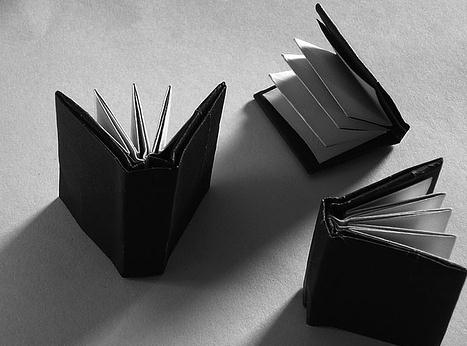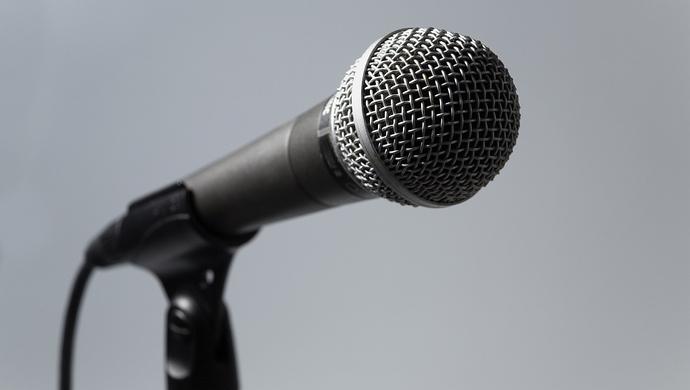灵感源于大自然的新发明
Engineer Eiji Nakatsu helped design the Shinkansen1), or bullet trains, of Japan. The high-speed trains are among the world"s fastest. But when they were first designed, there was one big problem: They made a thunderlike boom when they entered tunnels because of the change in air pressure.
Nakatsu was stumped2) for a solution—until he thought about the hunting tactics of a bird called the kingfisher3). Sitting still as a statue onshore, it waits for its prey in nearby waters. When the bird spots some fish, it dives into the water without making a sound—despite the change in pressure it faces as it goes from the air to water. Nakatsu realized that the kingfisher owed its stealth4) to its knife-shaped beak.
The current generation of bullet trains have a nose like a kingfisher"s beak. The new design works like magic: The trains are quieter through tunnels, faster, and more efficient.
The concept of engineering technology so that it copies nature is known as biomimicry5). "Nature has had millions and millions of years to come up with solutions to problems," says Jennifer Gille, an engineer at Qualcomm, a wireless communications company based in San Diego, California. "If we can piggyback6) on those millions of years of experience, we can do some amazing things."
工程师中津英治帮助设计了日本的新干线列车(又称子弹头列车)。这种高速列车是世界上最快的交通工具之一。但在列车设计之初,人们遇到过一个很大的难题:列车进入隧道时会引起隧道内气压的变化,从而会造成雷鸣般的巨响。
中津一直没有找到解决方案,直到他想到翠鸟的捕鱼方法。翠鸟会像雕像一样静静守在岸边,等待它的猎物在附近水面出现。发现鱼后,翠鸟一头扎入水中捉鱼,却不会弄出任何声响——尽管它从空气进入水中时身体承受的压力会发生变化。中津发现,翠鸟的“消音术”得益于其刀刃般尖锐的鸟喙。
如今的子弹头列车都有一个像翠鸟鸟喙一样的车头。这种全新的设计获得了神奇的效果:列车过隧道的声音变小了,同时速度更快,能效更高。
像这样模仿大自然的工程技术就被称为仿生学。“大自然用了亿万年的时间想出了很多解决问题的办法,”加利福尼亚州圣迭戈高通无线通信公司的工程师珍妮弗·吉勒说,“如果能利用这些亿万年来的经验,我们就能做出非比寻常的事情。”
Robotic Trunk 机械臂
The elephant, with its flexible trunk, inspired a German company called Festo to make a bendable robotic arm.
An elephant trunk contains about 40,000 bundles of muscle. It is so dexterous7) that it can pick up single grain of rice. Many robotic arms are made of heavy, rigid metal. But like an elephant"s trunk, Festo"s robotic arm is bendy.
The arm uses three lines of actuators8). These mechanisms turn air pressure into movement. When one of the lines contracts and the others stretch, the arm bends. The arm is built from a lightweight material called polyamide and can bend away from an accidental bump9). This makes the arm safe enough to work beside people in factories, hospitals, and in homes to help people with special needs. At the end of the flexible "trunk" is an adjustable gripper that can hold objects.
大象的鼻子十分灵活,受此启发,德国一家名为费斯托的公司制造出了能灵活弯曲的机械臂。
大象的鼻子含有约四万块肌肉。象鼻极为灵巧,甚至能捡起一粒大米。机械臂多由笨重僵硬的金属制成,但费斯托公司制造的机械臂却能如象鼻一般灵活弯曲。
该机械臂有三排传动装置,这套机械装置能把气压转化成动力。当一排传动装置收缩而其余传动装置伸展时,机械臂就能弯曲。该机械臂用一种名为聚酰胺的轻质材料制成,在遭到意外撞击时会自动弯曲躲避。有了这种特性,这种机械臂就能应用在工厂和医院以辅助人们的工作,或用于家庭帮助有特殊需要的人,而无需担心安全问题。这种灵活自如的机械臂前端还装有一个能抓住物体的可调夹持器。
Lessons from a Butterfly 蝴蝶的启示
The wings of the morpho10) butterfly inspired a new type of screen for mobile phones, computers, and e-readers. Most electronic screens are backlit, which means they shine light behind the display to make the image visible. This type of screen uses a lot of energy, meaning users have to recharge their devices often. The wireless communications company Qualcomm in California came up with a screen that requires less power.
Morpho butterflies sport11) brilliant blue wings that glow with iridescence12), the shimmer13) also seen in peacock feathers. An iridescence object appears to shine because it reflects the light of a certain color, bouncing it back like a mirror. An innovator named Mark Miles figured that if butterflies could reflect light so intensely, then a display screen could too. With this inspiration, he pulled together14) a team of engineers and designed what"s called the mirasol display15). This screen utilizes microscopic machines that help reflected light appear as different colors at different times to display pictures or video.
By mimicking the morpho butterfly"s reflective properties, devices with a mirasol display have batteries that last longer than those in devices that have backlit displays.
受大闪蝶翅膀的启发,人们发明了一种可用于手机、电脑和电子书的新型显示屏。现在的大多数电子屏幕为背光屏,也就是说要靠屏幕背后发光才能显示出图像。这种屏幕耗电量很大,用户须经常给设备充电。而加利福尼亚州的高通无线通讯公司却推出了一种耗电少的新型显示屏。
大闪蝶的翅膀呈亮蓝色,非常耀眼,能散发出彩虹色的光泽——在孔雀的羽毛上也能看到这种光泽。能散发出彩虹色光芒的物体之所以看上去很亮,是因为它可以反射特定颜色的光,就像镜子一样把这种光反射回去。一位名叫马克·迈尔斯的创新者认为,如果大闪蝶能这样强烈地反射环境光,那么显示屏也能做到。带着这个灵感,他与一个工程师团队齐心协力,设计出了Mirasol显示屏。这种显示屏利用能使反射光在不同时间呈现出不同颜色的显微装置来显示图片或视频。
通过模仿大闪蝶的反光特性,使用Mirasol显示屏的那些设备的电池续航能力比那些使用背光显示屏的设备更强。
Seaweed Power 海藻发电
Seaweed has inspired a new way to generate electricity from ocean waves—a source of renewable energy. Most designs to harness16) wave energy have large platforms or floating buoys17). Platforms can be swept away by big waves, and buoys aren"t able to capture much energy.
Timothy Finnigan, an engineer and founder of BioPower Systems in Australia, wanted to create a better way to harness wave energy. As he began his research, he tried different designs. Soon Finnigan noticed that the best design looked familiar. "Our structure [called BioWave] is like a big plant in the ocean." Like kelp18) swaying in the sea, BioWave moves slowly and uses a pivot19) to bend. The technology can even lie flat against the sea floor in bad weather so it doesn"t get damaged.
Other inventions by Finnigan"s company also have designs that are inspired by nature. For example, one has a "fin20)" that can sweep back and forth in a tidal current to capture energy. Its design mimics the fins of tuna, sharks, and mackerel.
受海藻的启发,人们发明了一种新的潮汐发电方法。潮汐是可再生能源的一种来源。大多数用来开发潮汐能的设计装置都依赖于大型海上平台或浮标。但平台会被巨浪卷走,浮标也无法充分捕捉潮汐的能量。
澳大利亚生物能源系统公司的创始人兼工程师蒂莫西·芬尼根试图找到一种利用潮汐能发电的更好方法。自着手研究以来,他尝试了许多不同的设计方案。芬尼根很快发现,最好的设计看上去似曾相识。“我们的发电装置[称为生物潮汐发电系统]外表就像海里的一种大型植物。”生物潮汐发电系统形如在海中摇曳的海藻,能缓慢摆动,借枢轴来弯曲,甚至能在天气恶劣时平铺在海底,从而免遭损坏。
芬尼根的公司还有一些其他的发明,其设计灵感也源于大自然。例如,一种设备装有“鱼鳍”,能随海潮来回摇摆从而捕获能量,其设计就模仿了金枪鱼、鲨鱼和鲭鱼的鱼鳍。
1.Shinkansen: 新干线(日本的高速客运列车系统)
2.stump [stʌmp] vt. <美口> 把……难住;使受挫
3.kingfisher [ˈkɪŋfɪʃə(r)] n. 【鸟】翠鸟
4.stealth [stelθ] n. 秘密行动
5.biomimicry
[ˌbaɪəʊˈmɪmɪkrɪ] n. 仿生学
6.piggyback [ˈpɪɡibæk] vt. 把……负在背(或肩)上
7.dexterous [ˈdekstrəs] adj. (身、手等)灵巧的,熟练的,敏捷的
8.actuator [ˈæktjueitə] n. 致动器;传动装置
9.bump [bʌmp] n. 碰撞,猛撞
10.morpho [ˈmɔ:fəu] n. 【昆】大闪蝶
11.sport [spɔːt] vt. <口>惹人注目地穿戴
12.iridescence [ˌɪrɪˈdesns] n. (变幻斑斓的)彩虹色
13.shimmer [ˈʃɪmə(r)] n. 闪光
14.pull together: 齐心协力;团结起来
15.mirasol display: Mirasol显示屏。Mirasol显示技术是由高通无线通讯公司开发的一种新型显示技术。它以一种称为干涉测量调制的反射型技术为基础,利用环境光显示图片或视频,而不需要背景光,因此功耗大大降低。
16.harness [ˈhɑːnɪs] vt. 利用(或控制)……以产生动力
17.buoy [bɔɪ] n. 浮标,航标
18.kelp [kelp] n. 海草;巨藻
19.pivot [ˈpɪvət] n. 枢,枢轴
20.fin [fɪn] n. 鱼鳍
推荐访问: 灵感 大自然 源于 新发明





